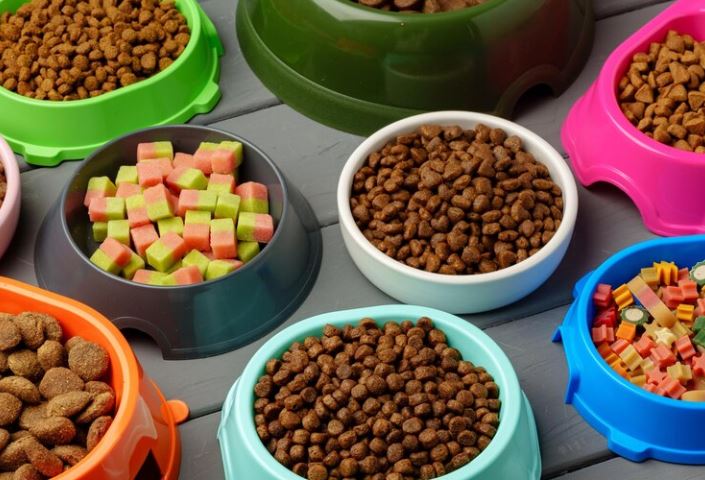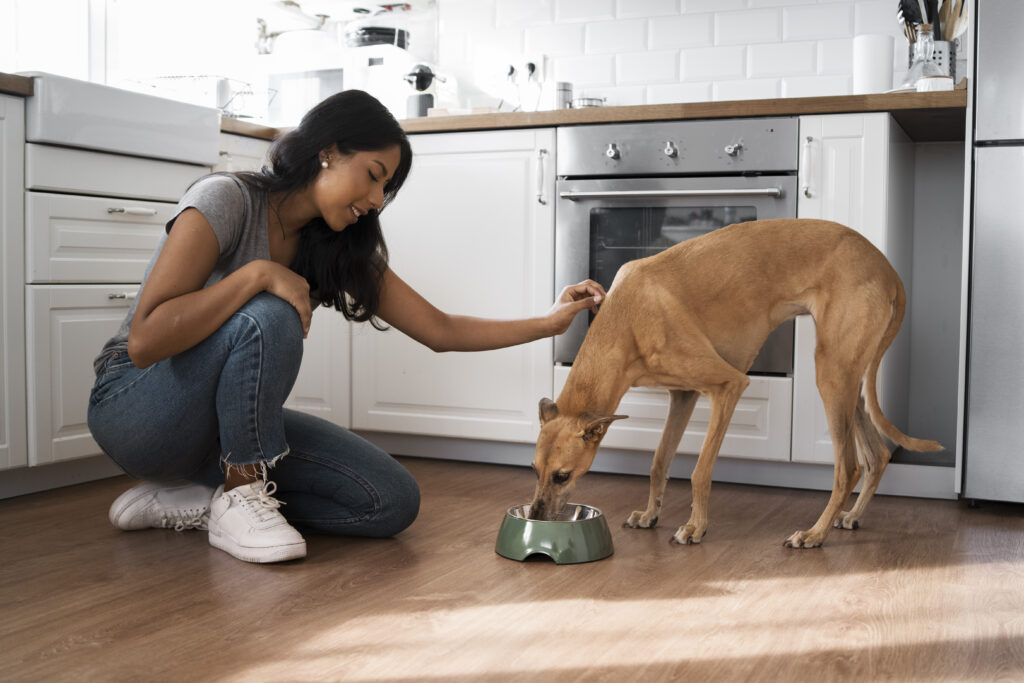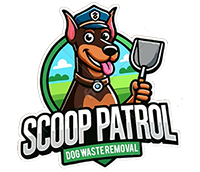Scoop Patrol Dog Waste Removal
Different Types of Dog Food: Pros & Cons

Choosing the right food for your canine companion is one of the most important decisions you’ll make as a dog owner. The market offers a bewildering variety of options, each with its own set of advantages and disadvantages. Understanding the different types of dog food is crucial for selecting a diet that meets your dog’s nutritional needs, supports their health, and fits your lifestyle. This guide provides a detailed overview of the main dog food types, exploring their pros and cons to help you make an informed choice.
Dry Food (Kibble)
Dry food, commonly known as kibble, is the most popular type of dog food on the market. Its popularity stems from its convenience, affordability, and dental benefits.
Pros:
- Convenient storage and handling: Kibble is easy to store and serve, requiring no refrigeration.
- Cost-effective: Generally, kibble is more affordable than other types of dog food, especially for large breed dogs or multi-dog households.
- Dental benefits: The crunchy texture of kibble can help reduce tartar buildup on dogs’ teeth, promoting dental health.
- Wide variety of formulations: Kibble comes in a vast array of formulations tailored to different life stages (puppy, adult, senior), breed sizes, and specific health needs.
Cons:
- Can be highly processed: Some kibble brands are heavily processed and may contain lower-quality ingredients.
- May contain fillers and artificial ingredients: Some kibble contains fillers, artificial colors, flavors, and preservatives, which may not be ideal for all dogs.
- Lower moisture content: Kibble has a low moisture content, which can be a concern for dogs that don’t drink enough water.
Wet Food
Wet food, also known as canned food, is characterized by its high moisture content and soft texture. It is often a favorite among picky eaters due to its palatability.
Pros:
- Highly palatable: The appealing taste and aroma of wet food make it very enticing to dogs, even those with reduced appetites.
- Good for hydration: The high moisture content of wet food can significantly contribute to a dog’s daily water intake, which is beneficial for kidney health.
- Easier for dogs with dental issues to eat: The soft texture of wet food makes it easier for dogs with dental problems or missing teeth to consume.
Cons:
- More expensive than kibble: Wet food is generally more expensive than kibble on a per-calorie basis.
- Shorter shelf life after opening: Once opened, wet food must be refrigerated and has a shorter shelf life compared to kibble.
- Can contribute to dental problems: While easier to eat, wet food can contribute to tartar buildup if not paired with regular dental care.

Semi-Moist Food
Semi-moist food is a less common type of dog food that contains more moisture than kibble but is still shelf-stable.
Pros:
- Palatable: Semi-moist food is often appealing to dogs due to its soft texture and flavor.
Cons:
- Often high in sugar and artificial additives: This type of food often contains high levels of sugar, salt, and artificial additives to maintain its texture and preserve it.
- Generally not considered a healthy long-term option: Due to its composition, semi-moist food is generally not recommended as a primary, long-term diet for dogs.
Choosing the Best Healthy Dog Food: A Comprehensive Review
Raw Food
Raw food diets consist of uncooked meat, bones, and vegetables. Proponents of raw feeding believe it more closely mimics a dog’s natural ancestral diet.
Pros:
- Advocates believe it’s closer to a dog’s natural diet: Supporters of raw food diets argue that they provide more natural and biologically appropriate nutrition for dogs.
Cons:
- High risk of bacterial contamination: Raw meat can harbor harmful bacteria such as Salmonella and E. coli, posing a risk to both dogs and humans.
- Nutritional imbalances: It can be challenging to formulate a complete and balanced raw diet at home, potentially leading to nutritional deficiencies or excesses.
- Potential for bone splinters to cause internal damage: Feeding raw bones carries the risk of bone splinters causing damage to a dog’s digestive tract.
- Controversial among veterinarians: The safety and efficacy of raw food diets are a subject of ongoing debate among veterinarians, with many expressing concerns about the risks.
Home-Cooked Food
Home-cooked food involves owners preparing meals for their dogs from scratch.
Pros:
- Control over ingredients: Home cooking allows owners to have complete control over the ingredients in their dog’s food, which can be beneficial for dogs with allergies or sensitivities.
- Can be tailored to specific needs: Home-cooked diets can be customized to meet a dog’s individual needs, such as weight management or specific health conditions.
Cons:
- Time-consuming: Preparing home-cooked meals for a dog is a significant time commitment.
- Requires careful planning to ensure nutritional completeness: It is crucial to ensure that home-cooked diets are nutritionally balanced to meet all of a dog’s requirements, which can be complex.
- Consultation with a veterinary nutritionist is essential: Consulting with a veterinary nutritionist is highly recommended to formulate a nutritionally adequate home-cooked diet.
Prescription Diets
Prescription diets are specially formulated dog foods designed to manage specific health conditions.
Pros:
- Medically necessary for managing certain diseases: These diets play a vital role in managing conditions such as kidney disease, liver disease, allergies, and digestive disorders.
Cons:
- Should only be used under veterinary supervision: Prescription diets should only be fed under the guidance and direction of a veterinarian, as they are not intended for healthy dogs.
Choosing the right dog food involves careful consideration of various factors, including your dog’s age, breed, activity level, health status, and your own lifestyle. Each type of dog food has its own set of pros and cons, and the “best” choice will vary from dog to dog. Consulting with your veterinarian is always recommended to determine the most appropriate diet for your furry friend and ensure they receive the nutrition they need to thrive.
